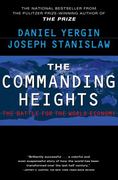Solve the following questions.,,,
(15 points) Suppose the consumer considers goods 1 and 2 to be perfect complements, so that her utility function is \"($1,132) = min{:r1, .132}. What is her demand fer goods 1 and 2 as a function of income so and prices p1 and 332? Show the derivationj rather than just writing down the demand function if you have it memorized. 1 2. Aperfectly competitive rm has a production function f(x1, x2) = xix? Input prices are given by W1 = 1 b. and WE = 32. Does this production function exhibit decreasing, constant, or increasing returns to scale? (I pt) In the short run, input factor 2 is xed at x2 = 16 and the rm chooses the optimal input quantity x; to minimize the cost of producing output 3: = 32. Derive xi\". (1 pt) Calcalate the costs cs associated with the above short-run solution. (1 pt) In the long run, the rm chooses the optimal input quanties x; and x; to minimize the cost of producing output y = 32. Write the Lagrangian function for this rm's long-run cost minimization problem. (I pt) Derive the rst-order conditions for this rm's long-run cost minimization problem. (3 pt) Solve the above rst-order conditions to derive the optimal input quantities x; and x3. (2 pt) Given the following information for a monopoly firm: Demand: P = 76 - 5(Q) Marginal revenue: MR = 76 - 10(Q) Marginal cost: MC = 2(Q) + 2 Average total cost at equilibrium is 20 1. At what output (Q) will this firm maximize profit? 2. At what price (P) will this firm maximize profit 3. What is the total revenue (TR) earned at this output level 4. What is the total cost (TC) accrued at this output 5. What profit is earned Assume this firm is to be regulated. Answer the following questions: 6. What is the social optimal quantity 7. What is the social optimal price3. The parameters of the Nelson and Siegel Extended model change instanta- neously to become Bo BI B2 B3 5.5% -1% 0.1% 5 2% 0.5 (a) Draw the new zero-coupon yield curve. (b) Compute the new price of the bond portfolio and compare it with the value given by the following equation: New Estimated Price = Former Price + ABo.Do,p + AB1 .DI.P + AB2 . D2, p + AB3.D3.P where AB, is the change in value of parameter , and Dip is the $duration of the bond portfolio associated with parameter Bj. 4. Same questions when the coupon frequency is semiannual.2 True or False (20 points) For each of the following statements, indicate if they are True or False. Justify your answer. 1. Bill is a football coach. He evaluates his players based on three criteria: height, strength, and speed. Bill prefers one player over another if he is better in at least two of these criteria. Assume that there are no players with the exact same height, nor the exact same strength, nor the exact same speed. (a) (4 points) Bill's preferences are complete. (b) (4 points) Bill's preferences are transitive. 2. (4 points) Ann and Bob are utility maximizing consumers. Given their income and market prices, Ann chooses a bundle that gives her a utility UAnn = 100, while Bob chooses a bundle that gives him a utility UBot = 110. Therefore, we know that Bob is happier than Ann. 3. (4 points) John's utility function for food (f) and clothes (c) is given by U (f, c) = (fo + c)a, with a > 0. John's preferences satisfy the principle of diminishing marginal rate of substitution for any value of a. 4. (4 points) Ava has preferences over two goods that satisfy completeness, transitiv- ity, non-satiation and the indifference curves have a strictly diminishing marginal rate of substitution. Suppose that the price of one of these goods increases (and the price of the other one remains the same). Claim: Ava's utlity must be strictly lower after the price increase. How does your answer depend on the composition of the initial consumption bundle











